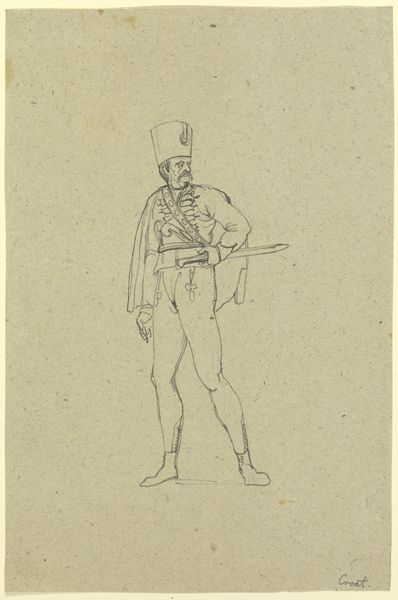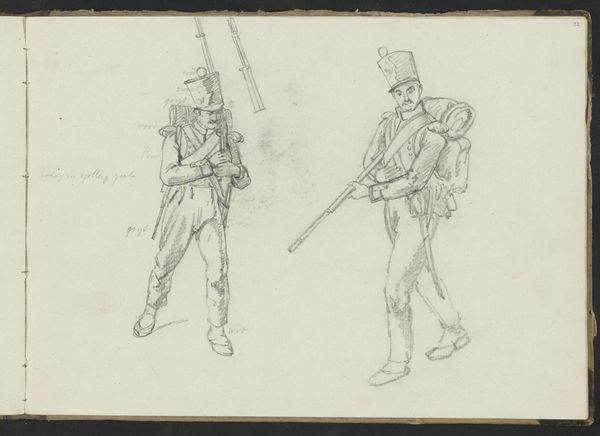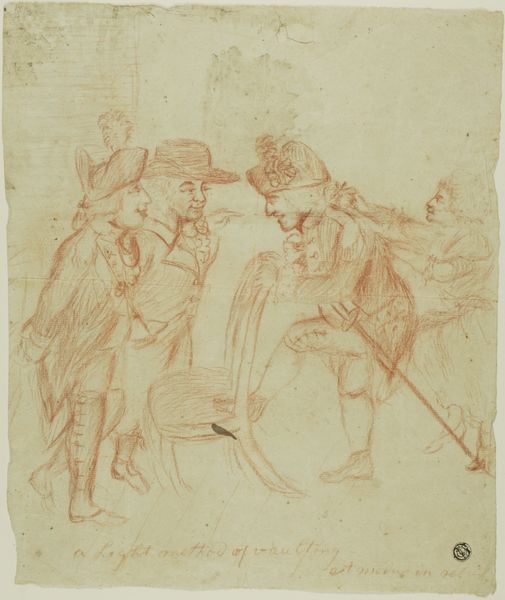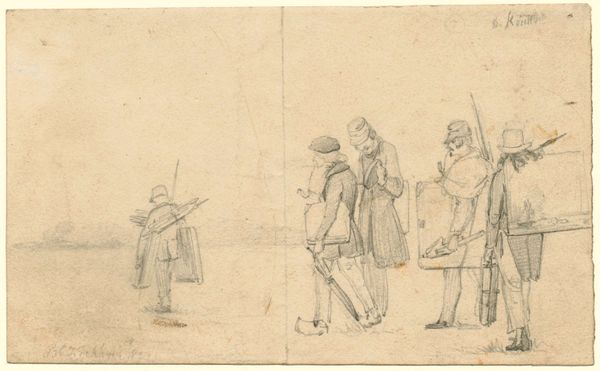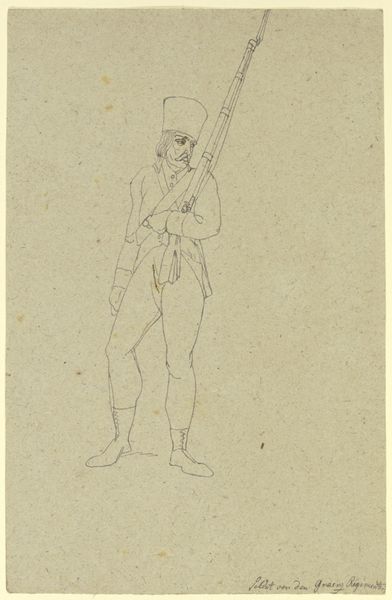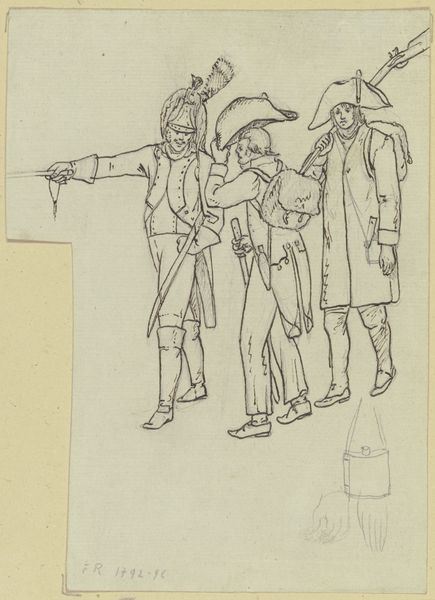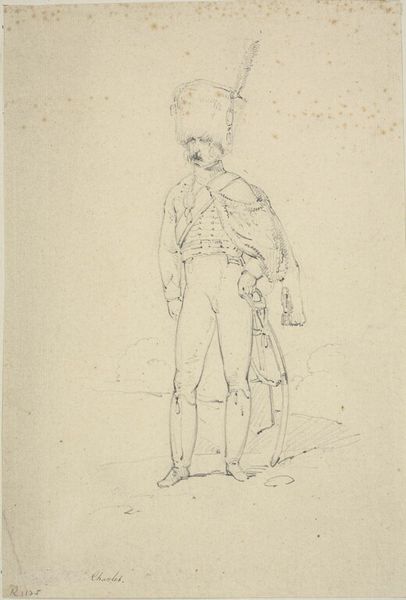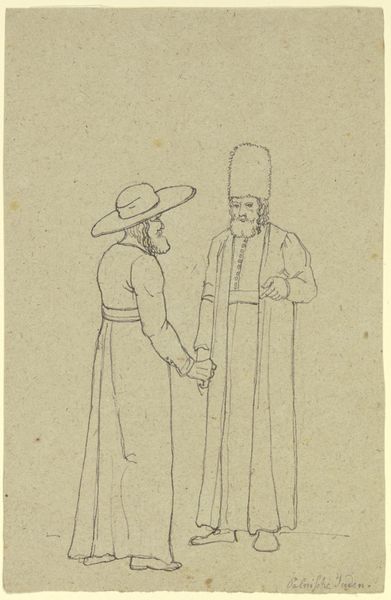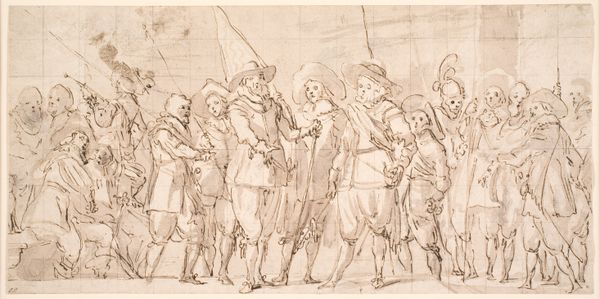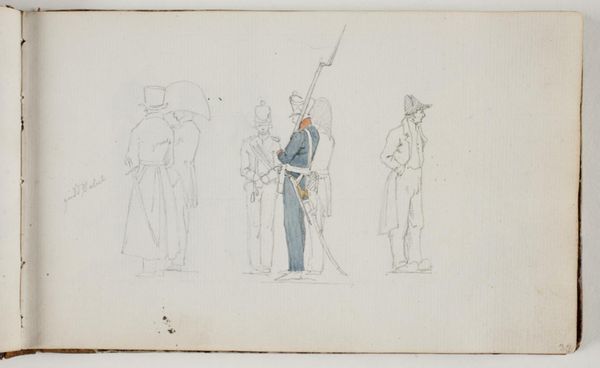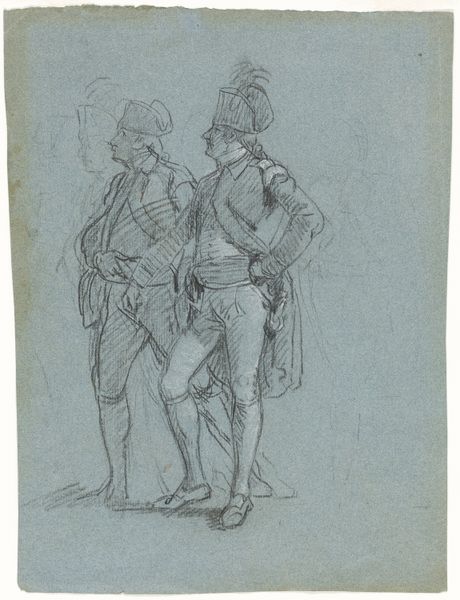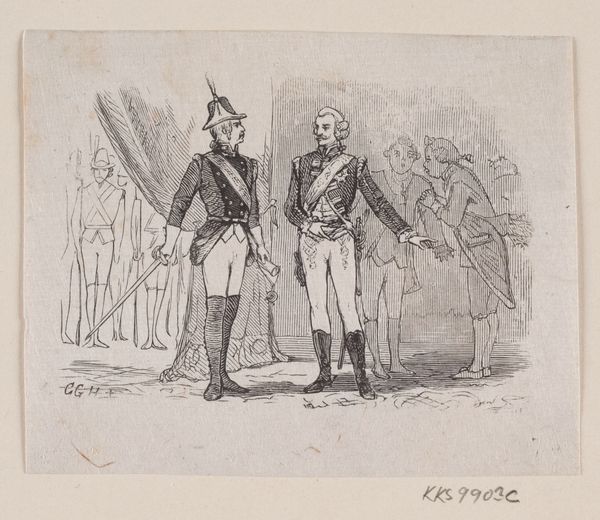
drawing, ink
#
portrait
#
drawing
#
16_19th-century
#
figuration
#
ink
#
line
#
history-painting
#
academic-art
Copyright: Public Domain
Editor: This is "Russian Infantry," a pen and ink drawing by Franz Pforr from the 19th century. It has an almost unfinished quality to it, but there's something really stark about these soldiers. What do you see in this piece, especially considering its historical context? Curator: Well, on the surface, it seems like a straightforward depiction of military figures. However, let’s consider the early 19th century - a time of revolution, Napoleonic wars, and shifting national identities. Who were these soldiers really fighting for, and what did their service represent? Were they agents of state power, or conscripted participants in a brutal system? How might the lack of detail and unfinished quality of the drawing speak to the human cost often obscured by the glorification of military history? Editor: That’s interesting, I hadn't thought about it that way. It looks very...academic, but you're making me question what's *not* being shown. Like, were they part of some larger colonial endeavor, and how does Pforr, as the artist, fit into that power dynamic? Curator: Precisely. It’s also essential to recognize that this was a time of nascent nationalism. The artwork's title gives us "Russian" infantry. Were these men willingly fighting for this ideal of a unified Russia? What narratives about bravery or duty were imposed upon them? And what other, often marginalized, stories might their image erase? The representation of conflict and violence always raises difficult ethical questions, about who gets to tell the story and whose perspectives are prioritized. Editor: So, it's not just a drawing of soldiers; it's a historical document that raises critical questions about power, identity, and representation? Curator: Exactly. By situating “Russian Infantry” within the political and social landscape of its time, and then examining those roots through the lens of contemporary theory, we see how seemingly simple images can become powerful tools for exploring broader narratives of history, identity and power. Editor: That really shifts how I see this drawing, makes it so much more than just a historical record. It's a challenge. Curator: It certainly is! And these challenges help us consider perspectives and uncover meanings which often get obscured in traditional art history narratives.
Comments
No comments
Be the first to comment and join the conversation on the ultimate creative platform.
